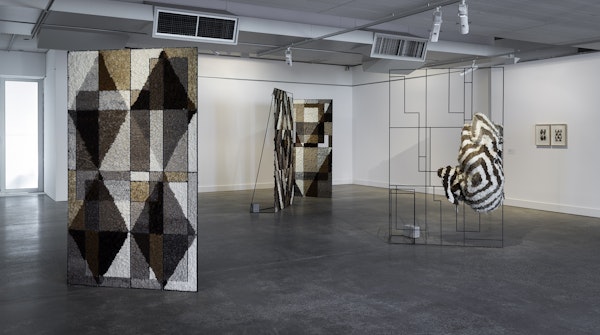

Sanné Mestrom
Black paintings
2014-18

Sanné Mestrom’s Black paintings, 2014–18, comprise five large and seven smaller sculptural tapestries made from undyed unspun wool and steel frames, complemented by ten gouache paintings. Three of the large tapestries were acquired with funds from the Elisabeth Murdoch Sculpture Foundation, and the artist generously donated the remaining works through Sullivan+Strumpf, Sydney.
This body of work showcases the diverse conceptual and material elements of Mestrom’s practice, which often references and redefines iconic twentieth-century artworks to question the cultural and aesthetic assumptions they carry.
The title refers to a series of abstract canvases made in the 1960s by the American painter Frank Stella, which helped to redefine the way painters thought about surface and the 'object quality' in their work. Mestrom’s Black paintings celebrate the rough texture and comforting qualities of wool and the associated notions of weaving as a feminine craft. Installed as free-standing sculptures, the works also encapsulate the tension between two and three-dimensionality that is characteristic of contemporary spatial practice. Complicating these boundaries Black paintings extrude from two dimensions into three, implicating the viewer in their presence as objects in space.
The thread of canvas here is extrapolated into the thick texture of the wool, and Mestrom highlights the artist’s labour in relation to traditional crafts such as weaving. Her Black paintings reanimate many of the contradictions of modern and contemporary art. As objects encountered in the gallery space they act as mirrors, not for reality but for the viewer’s self as a curious and complex perceptual being existing in time and space.